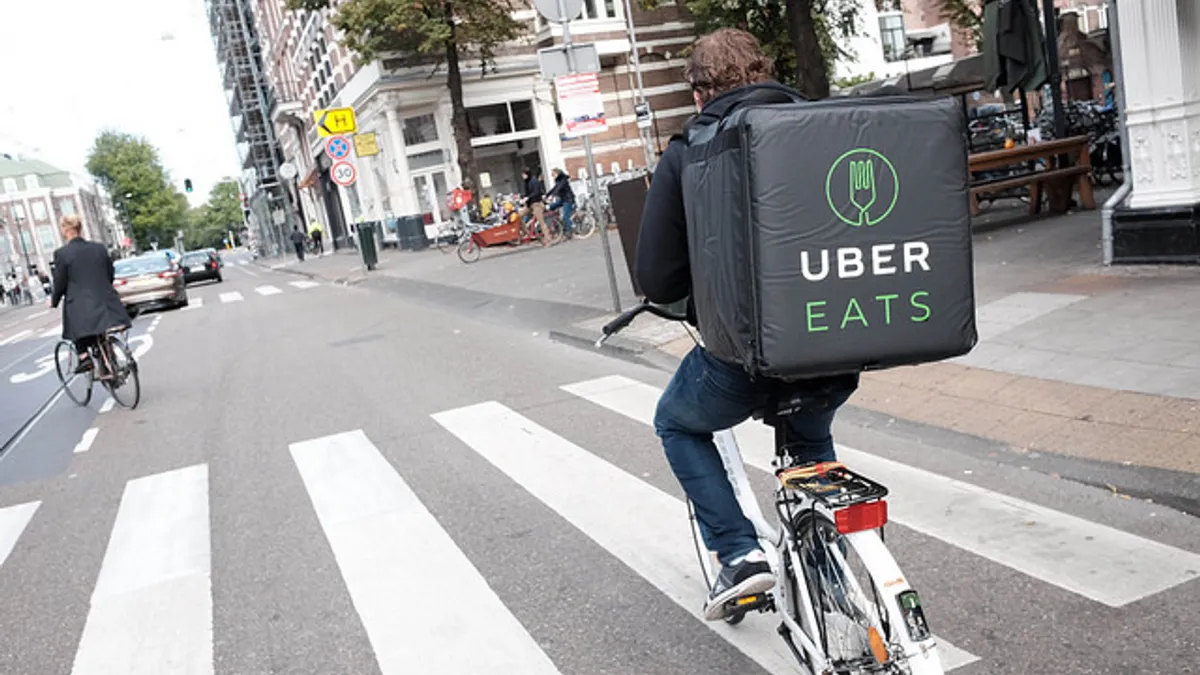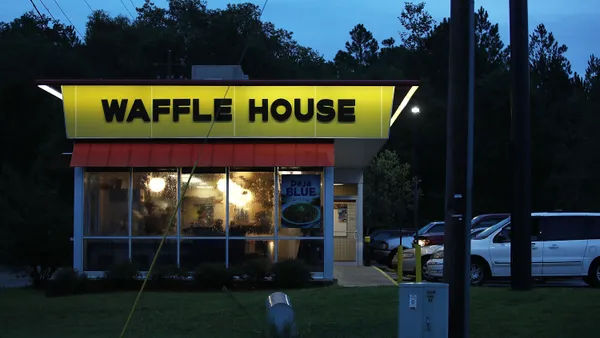Dive Brief:
- So far this year, venture capital firms have poured $3.5 billion into food and grocery delivery companies. This more than triples the amount invested in such companies last year, according to PitchBook and reported by the Wall Street Journal.
- The $3.5 billion total includes the $600 million investment led by hedge fund DI Capital Partners in grocery delivery company Instacart two weeks ago. The cash infusion inspired founder Apporva Mehta to predict an impending IPO. Postmates has also been interviewing banks to go public, and would join GrubHub as the only company dedicated specifically to food delivery on the market.
- According to Mizuho Securities restaurant analyst Jeremy Scott, takeout and delivery will represent 15% of restaurant sales a decade from now, up from about 5% now.
Dive Insight:
Delivery is a natural extension of the restaurant space, as the pizza and Chinese segments have proven for years. But now everyone’s jumping into the category — from McDonald’s to IHOP — thanks to digital-native, convenience-seeking consumers.
These companies are jumping in for good reason. Despite stagnation in the U.S. restaurant industry, foodservice delivery posted sizable gains in both visits and sales throughout the last five years, according to The NPD Group. The 20% rise in delivery sales and 10% increase in delivery foodservice visits have been driven in large part by the jump in digital ordering, which makes up more than half of all delivery visits.
As a result, investors are bullish. DoorDash is valued at $4 billion, for example, while competitor Grubhub is worth nearly $9 billion. UberEats, the fastest-growing delivery company, was recently estimated to be worth about $20 billion. The food delivery race is particularly intriguing as companies that focus on grocery specifically, like Instacart, are in the mix. This doesn’t just blur the lines of foodservice — it erases them. It also puts a significant amount of pressure on restaurants to maintain a differentiator.
As investors open their wallets, consolidation is likely to become more common and the little guys are more likely to get gobbled up. This has already started to happen — Grubhub acquired rival Yelp’s Eat24 earlier this month.
The restaurant industry is on the ground floor in foodservice delivery and the opportunities are exciting. However, while delivery isn’t likely go to away (some restaurant brands have already explored drone delivery potential) there is a big question mark over the sustainability of the business model with third-party delivery.
A recent study found that, despite the staggering growth in the third-party space, most consumers still prefer to order delivery directly from the restaurant brand. Clearly, customer loyalty lies with the restaurant company, not their delivery partner. In other words, it’ll take a lot more than deep pockets and Wall Street to enable the success of this market, especially as some restaurant operators like Bareburger plan to leave third-party delivery companies and form their own delivery infrastructure within the next year and a half.












